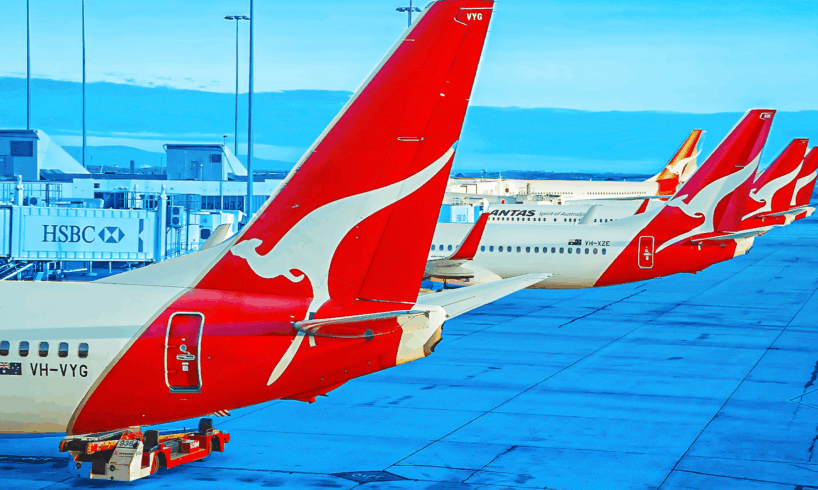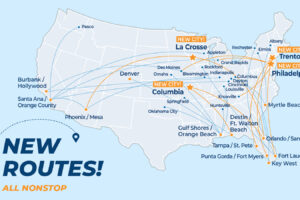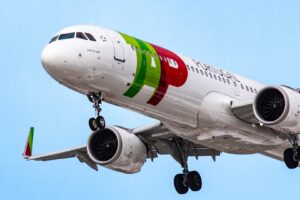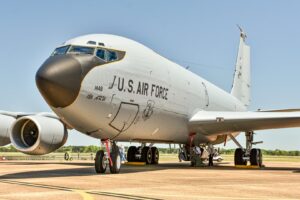
Qantas
is spending big on acquiring new Boeing 787-9s, Airbus A350-1000LRs, A320neos, A321LRs, A321XLRs, and Airbus A220s. By 2027, it is expected that almost half of all flights across Qantas’ and Jetstar’s narrowbody fleets will be operated by next-generation aircraft. All the new aircraft Qantas is receiving in 2025 are Airbus aircraft, which may help insulate it from the current trade war. The Qantas Group is receiving a mixture of new and second-hand aircraft in 2025.
Qantas
IATA/ICAO Code
QF/QFA
Year Founded
1920
CEO
Vanessa Hudson
While the Qantas Group has Boeing 787 Dreamliners and Airbus A350s on order, none are expected to be delivered in 2025. Instead, the Qantas Group’s new aircraft are to come from two Airbus narrowbody families: the A220 and the A320. Qantas is the flag carrier of Australia and by far the largest airline in the country, with Virgin Australia being the primary rival. So, how many aircraft can the Qantas Group expect to receive in 2025?
Qantas’ Ambitious Modernization
Photo: Qantas
Qantas is currently undergoing the most ambitious modernization program in its history, and the airline is aggressively upgrading its fleet to feature more current-generation aircraft. Qantas and its low-cost subsidiary, Jetstar, have more than 100 aircraft on firm order, with additional purchase options in place. The group is purchasing Boeing 787s and Airbus A350s to replace its aging fleets of A330s and, eventually, Airbus A380s.
According to Travel Weekly, the Qantas Group is expected to receive 20 new passenger aircraft in the 2025 financial year, which is a significant increase from the number it received in FY 2024. These include both narrow and widebody aircraft, including its first Airbus A321XLR. Meanwhile, Jetstar will receive more A320neos and A321LRs, and QantasLink is receiving more A220s. It should be noted that the financial year in Australia runs from July 1st, 2024 to June 30th 2025.
Qantas’ mainline fleet is 16 years old on average. It has consistently been ranked as the safest airline in the world according to Airlineratings.com, although it recently lost the top spot to New Zealand’s flag carrier, Air New Zealand. Qantas has relied on narrowbody Boeing aircraft for domestic and short-haul routes, although it is pivoting more to Airbus narrowbodies. A220s are replacing its former fleet of Boeing 717s in its regional fleet, while A321s are replacing some of its 737-300s in its mainline fleet.
Qantas’ Airbus A220 Deliveries
Photo: Patrick Desrochers | Airbus
The smallest commercial passenger jet Qantas is expected to receive are the Airbus A220-300. These were developed by Canada’s Bombardier as the CSeries, but the program was later sold to Airbus, which renamed it as the A220. These are being built in Quebec, Canada. Qantas has ordered a total of 29 A220s for QantasLink, and it received its first example in December 2023.
The A220s will replace Qantas’ retired Boeing 717s. They have almost double the range of the Boeing 717s and have the ability to fly nonstop between any two destinations in Australia. As a current-generation aircraft, the A220 comes with around 25% fewer CO2 emissions per seat and up to 50% noise footprint reduction compared with previous-generation aircraft. They also come with 25% more seats, fitting 137 seats compared with the 110 that the 717 had.
QantasLink deliveries financial year to date (2025):
Airbus A220-300:
4 (+3 pending)
new aircraft
De Havilland Canada Dash 8 (Q400):
13 (planned)
ex-Sunstate Airlines aircraft
Airbus A319:
3 (+1 pending)
19-year-old ex-Spirit Airlines aircraft
QantasLink took delivery of its newest A220-300 (VH-X4F) in April 2025, and this was the sixth A220 to join the fleet. The first A220 arrived in Australia in December 2023, and the final example is expected to arrive by the end of 2027. QantasLink is expected to receive another 13 De Havilland Canada Dash 8 (Q400) aircraft as well as four Airbus A319s. The carrier has already received a 19-year-old A319 (in March 2025) that was originally delivered to Spirit Airlines in 2006.
Related
Qantas’ Airbus A380 Fleet: 5 Things For Passengers To Know Before Flying
Ten of Qantas’ original fleet of 12 A380s are expected to continue flying long-haul routes beyond 2030.
Jetstar’s A320 Family Deliveries
Photo: Ryan Fletcher | Shutterstock
Jetstar is a low-cost subsidiary of Qantas and operates a fleet of 88 aircraft. This figure is made up of 11 Boeing 787-9 widebodies and 77 Airbus A320-family narrowbodies. The airline is currently taking delivery of A320neo and A321LR aircraft, while its first A321XLR aircraft are expected to arrive in 2025.
The airline has received at least 10 of its 13 A320neos on order and at least 19 of its 25 A321LRs. Jetstar is to be the recipient of a large share of the 36 A321XLRs Qantas has ordered, and it is Jetstar that is expected to drive the Qantas Group’s deliveries in FY 2025.
Jetstar’s deliveries in the financial year to date (2025)
Airbus A320neo
Three
Two more on order
Airbus A321LRs
Six
Five more on order
Airbus A321XLR
None
First delivery expected in 2025
In all, the low-cost airline is expected to receive 13 aircraft of the group’s total 20 expected deliveries. The remaining seven aircraft are to be narrowbodies for the mainline Qantas fleet and its regional QantasLink brand. Four aircraft are expected to be delivered to Jetstar in the year to June.
Qantas’ Airbus A321XLR Deliveries
Photo: Airbus
The Airbus A321XLR is the longest-range narrowbody aircraft in the world, boasting an impressive figure of 4,700 nautical miles. The aircraft is filling the mid-sized airplane gap left vacant by the termination of the Boeing 757 in 2005 and the lack of progress being made on Boeing’s so-called 797 Mid-Sized Airplane. The type was first delivered to Iberia in October 2024 and entered revenue-generating service in November that year.
Qantas has an order for 36 examples of the A321XLR. The first Qantas XLRs entered the final assembly line in November 2024, and they are expected to be delivered in 2025. These are slated to replace its aging Boeing 737-800 fleet. Their range will also open up potential new international routes to Southeast Asia and various Pacific Islands.
Qantas states that “with the introduction of 28 new aircraft to our fleet from June 2025, our A321XLR offers a wide range of Australian domestic and short-haul international routes.” Still, the Boeing 737-800 will remain in service for some time yet, as, with a current figure of 75 Boeing 737-800s, the type is the workhorse of Qantas’ 125-strong fleet. Qantas is currently upgrading the cabins of 42 of its Boeing 737s, including next-generation business and economy seats, together with larger overhead lockers.
Related
Qantas’ Antarctic Sightseeing Charter Flights: What To Know
The airline is scheduled to operate seven sightseeing flights to the South Pole.
Qantas’ Boeing 787 Dreamliner Deliveries
Photo: Vincenzo Pace | Simple Flying
Historically, Qantas (and Australia as a whole) enjoyed a strong relationship with Boeing and the United States. However, Qantas has been transitioning its fleet to include a greater mix of Airbus aircraft. This may have been fortuitous as the current trade war, if taken to the ‘worst case scenario,’ could see Boeing cut off from the international market. Indeed, Boeing deliveries to Chinese airlines have already been paused by China.
Qantas has ordered a total of 18 Boeing 787-9s and 8 Boeing 787-10s for its mainline operations. Fortunately for Qantas, most (14) of the Boeing 787-9s have already been delivered. The remaining four are scheduled to be delivered in 2027, while deliveries for the 787-10s are expected to commence from 2027. Dreamliners are progressively replacing Qantas’ aging fleet of Airbus A330-200s. Interestingly, Qantas is looking to replace its A330 fleet with 787s and A350s, and is not purchasing A330neos.
Qantas’ Boeing 787 Fleet
Current Inventory
On Order
Boeing 787-8
14
4
Boeing 787-10
8
The last Boeing 787-9 Qantas received was delivered in July 2023. Qantas has selected its Dreamliners to come with the GEnx-1B74/75 instead of the alternative British (but less popular) Rolls-Royce Trent 1000. It’s unclear how this choice could affect the jet in a trade war. AerCap recently stated that in an “absolute worst-case scenario,” the cost of the Dreamliner could rise by $40 million. At this price, AerCap stated that international airlines wouldn’t purchase the jet, and would instead turn to Airbus.
Qantas’ Airbus A350-1000 Deliveries
Image: Qantas
The delivery of the first Airbus A350-1000s has been delayed to 2026, meaning that Qantas is no longer scheduled to receive any of its upcoming A350s in 2025. When they eventually arrive, they are expected to replace its Airbus A330-300s, and will eventually replace its fleet of Airbus A380 ‘superjumbos’ as part of the largest fleet renewal in its history.
The ultra-long-range A350-1000s are to be used to fly non-stop from Sydney to London. This route is currently served by the A380, which has to make a stopover in Singapore along the way. They will also fly non-stop from Sydney to New York City, a route that currently requires a stopover in Auckland, New Zealand. The A380s will continue flying for Qantas for years yet, and, in fact, the airline plans to return its two remaining A380s to service later in 2025.
It should be noted that the global supply chain is interconnected, and Boeing aircraft rely on imported components, as do Airbus jets. However, the A350 may be more insulated by US tit-for-tat tariffs as the A350’s powerplant is the British Rolls-Royce Trent XWB engine. Meanwhile, Airbus narrowbodies are powered by Pratt & Whitney or CFM International LEAP (a joint Safran-GE Aerospace venture) engines. Time will tell if the current trade war will result in Airbus delivery delays or not.
Related
What Is The Oldest Plane Still Flying In The Qantas Fleet?
The oldest aircraft still flying for the Qantas Group is a Fokker 100 currently serving its regional QantasLink airline.






